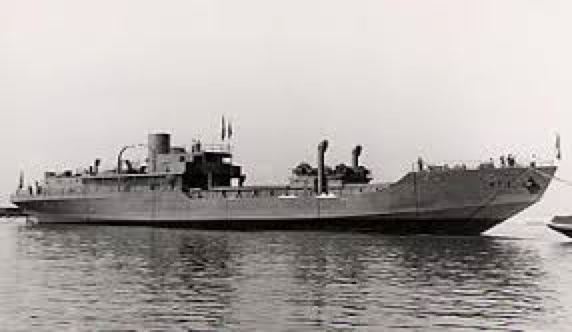Background
1941 was not a good year for the German naval supply capacity in the Mediterranean, with many of the vessels that were present at the start of operations in North Africa in February being lost by the end of the year. The tonnage losses amounted to about 70,000 tons lost out of 124,000 tons available at the start of the year, or 57%. It was of course impossible to send major vessels into the Mediterranean to replace these ships.
The shortage was particularly acute when it came to faster vessels, that could make the run to North Africa at higher speed, reducing their vulnerability to interception. Furthermore, there was also a lack of smaller vessels that could use the heavily degraded ports on the North African coast, which were strewn with wrecks from 18 months of warfare.
24 January 1942 10.30am
Conference at the Naval Attache concerning the construction of Kriegstransporters, with participation by Captain Kleikamp, Lt.Com. Aust from the German Naval High Command, Director Scholz of Deutsche Werke yard Hamburg and Commander German Naval Transport Italy. Captain Kleikamp informed as follows about the Kriegstransporter:
Length: 62 m
Width: 11 m
Height to main deck: 4.2 m
Draught: 2.9 m
Displacement loaded: 1,200t
Stowage space: 980 cbm
Carrying capacity: 400 tons
Bunker capacity: 160 tons
Range: 1,500 nautical miles
Speed: up to 14.5 knots
Hatch 1: 6.75×5.4 m, space for 2 tanks
Hatch 2: 9.8×7.4 m, space for 4 tanks
Cranes: 1×30 t, 4×5 t or 1×30 t, 1×10 t, 3×5 t
Armament: 1×7.5 cm gun, 1×3.7 cm AA gun single barrel, 2×20 mm guns
All the material for 20 transporters, including engines and secondary engines, will be delivered from Germany. The construction plan foresees the following dates for the first group of four steamers:
Laying down: 15 March 1942
Launch: early June 1942
Commissioning: end of August or early September 1942
Another meeting was held at the Italian naval ministry in Rome on 27 January, with high-level representatives from the four shipyards designated to carry out the programme, and the Italian naval ministry. The conclusion of this was a programme that foresaw materials being delivered from February to May 1942, and for five steamers to be ready by the end of September 1942, with another two coming in October and November each, and another four in December, for a total of 12 being ready by the end of the year, and the remaining eight to be finished by the end of August 1943.
This meeting was followed by another meeting during the morning of 28 January in the Naval Ministry, at which the German side was informed by the Italian navy that because of an intervention by the Italian Minister for Transport, the programme had to be halved, because it otherwise threatened the Italian construction programme. The new programme foresaw five steamers to be ready in September, with the remainder coming in the fourth quarter of 1942.
In the end however it was to take to 3 February 1943 to reach the number of four completed KT from Italian yards. Construction continued until the end of the war, when 40 of the KT had been completed on Italian yards, and another two in a French yard. 30 KT were launched by Ansaldo Genoa alone by the end of the war. KTs were also assembled in the Black Sea. Despite these numbers, I am not aware of a surviving example.
Further Reading
An excellent source for these little-known vessels is Wilhelm Donko, Die Kriegstransporter KT1 – KT62 der Deutsche Kriegsmarine: Konzept, Einsatz und Verbleib
There is a very informative thread including many pictures at this link.
There is a great diver article on the wreck of what is probably KT11 at this link.
The history of KT3 can be read at this link.


Was never able to discover what is the 75/40 gun in it.
LikeLike
Actually it was not a German gun, but an adapted Polish army gun, a Schneider 75mm on a “navalised” mount. They were also used on MFP´s. If I recollect correctly you can find a picture of one such gun on an MFP still with on its original wheeled carriage in the book “Plattbugkreuzer”.
LikeLiked by 1 person
Indeed. The Schneider 75s saw a lot of use, since there were so many of them.
LikeLike